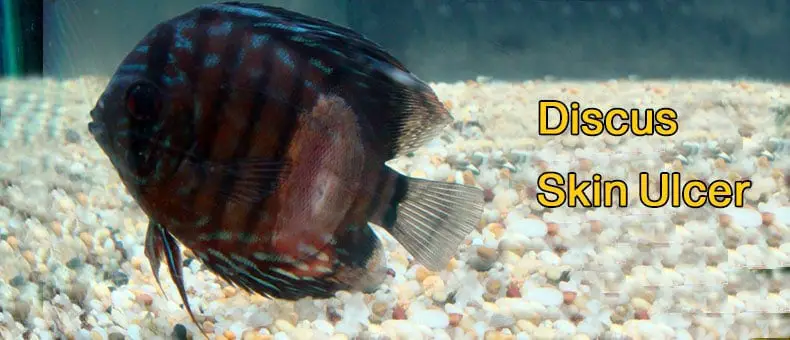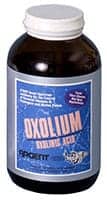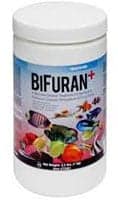
Table of Contents
- What Is Discus Skin Ulcer?
- Discus Skin Ulcer Symptoms
- Discus Skin Ulcer Description And Causes
- 6 Steps To Discus Skin Ulcer Treatment
- Discus Skin Ulcer Future Prevention Tips
- Related Questions
- Conclusion
What Is Discus Skin Ulcer?
Discus Skin Ulcer or Skin Ulcer disease can be defined as a sore on the skin of the Discus which can ultimately end up causing deadness of tissues (sphacelus). Skin ulcer disease is an ailment that occurs when bacteria infect an already open wound on the body of Discus.
Discus Skin Ulcer Symptoms
- Scales become elevated.
- The veining is enhanced; a condition known as erythema.
- Discus begins to lose its scales from scratching its body against a hard surface.
- Different sizes of red spots on the skin.
- Underlying muscles in Discus become exposed.
- Discus begins to lose the structure of its fins.
- Skin erosion.
- Weakness or lethargy.
- Loss of appetite. Discus either does not eat much or doesn’t eat at all.
- When skin ulcer disease is not treated in time, it could result in death.
Discus Skin Ulcer Description And Causes
There are two causes of Discus skin ulcer:
[1] – Skin Ulcer Disease (Bacterial Infection)
Often times, skin ulcer disease in Discus is caused by a bacterial infection.
When bacteria are in a healthy tank, they cannot do much damage, however, if the Discus is already under stress due to poor water conditions, variations in water temperature or other factors in the tank such as parasites, then bacteria can easily infect the wounds in the Discus and cause skin ulcer disease.
Acute stress is of great benefit to your Discus because it elicits the “fight or flight” response, but when a situation arises where Discus cannot escape the source of its stress, the stress becomes chronic which will ultimately reduce the functionality of its immune system, body condition as well as fertility.
The condition of water wherein Discus lives has a great impact on its health.
If the tank water of the Discus is not properly managed and maintained, it will ultimately lead to a lot of issues, including skin ulcer disease. If the water in the tank has a high ammonia or nitrite level, the immune system of the Discus will decrease in function, and this can give parasites as well as bacteria a leeway into the fish.
[2] – Body/Skin Ulcer Disease (Protozoa)
When Discus becomes infested with parasites, the Discus will be stressed out, and this can open up a path for bacteria to infect the fish when they flash (that is, when Discus begins to scratch itself against any surface such as the sides of the tank, rocks, or plants).
Parasite infestation can result from adding new fish to the tank without having to go through quarantine process first and when the temperature of the tank water is not stable but is fluctuating which is likely the case when tanks that are placed outdoors.
List of all possible causes
- Poor water conditions.
- Aggressive behaviour and nipping among fishes in the tank – When more than one fish is kept in a tank, there tends to be competition over food, territory and chances for procreation which can lead to fights among the fishes or nipping.
- Parasites.
- Poor nutrition – Poor nutrition can also stress your Discus and open a way for bacterial infection.
- Bacterial infection on open wounds – Stress that arises as a result when combined with open wounds that your Discus might have can lead to skin ulcer disease.
- Spawning – If your Discus is spawning, its body will get a little rough, hence your Discus will tend to rub or scratch itself against rocks or any other surface which could result in them having scrapes, this gives bacteria an entrance into the body of the Discus causing skin ulcer disease.
6 Steps To Discus Skin Ulcer Treatment
In order to cure the Discus skin ulcer disease, we need to work on a combination of both infection causes to kill all possibilities of causing the disease, so follow the below treatment steps to treat Discus Skin Ulcer Disease:
[STEP1] – Make A Potassium Permanganate Bath
- First thing first, prepare a small bucket or tank.
- Add 1/8 teaspoons of Potassium Permanganate into 4 gallons of water (15 litres)
- Dip Discus in the water for 20 minutes.
After the dip, prepare the hospital tank.
[STEP2] – Quarantine The Effected Discus
Take affected fish and put in a separate tank (quarantine).
Add Acriflavine and Tetracycline to the tank water.


[STEP3] – Change 35% Tank Water
Change 35% of your main tank water and remove the carbon from your aquarium filter.
[STEP4] – Add Antibiotics To The Main Tank
Put antibiotics into the tank water such as:
- Melafix.
- Pimafix.
- Oxolium powder.
- Bifuran.




[STEP5] – Add Salt To Your Tank
Add sodium chloride, also known as (sea salt) to aid in the healing of open wounds.
[STEP6] – Further Treatment

- Use injections such as Baytril or Nuflor. Invite your vet to give the injections to your Discus.
- Use iodine, potassium permanganate or hydrogen peroxide to rub on the affected area (red areas on the skin) from the head down to the tail.
- Use medicated food. There are regulations that have been placed on medicated foods, so you will have to medicate your fish food on your own.
Treatment Important Tips
- Be sure to avoid using antibiotics that are not prescribed to treat your Discus because they have not been tested for effectiveness.
- When treating your Discus using water-based medication that is not prescribed, you might end up wiping out the biologic filter in the tank and create a more stressful environment for your Discus.
- When skin ulcer disease becomes very severe, it will be best to consult your vet who will perform a culture or sensitivity test to determine which bacteria you are dealing with and then administer antibiotics to tackle the bacteria.
Discus Skin Ulcer Future Prevention Tips
- Ensure that the condition of the tank water is good.
- Do regular checks to make sure that the temperature of the tank water is maintained.
- Store your Discus feed properly; a sealed container that is resistant to light is recommended and be sure to keep the container in a cupboard.
- Feed your Discus with the appropriate quantity and quality of food. Poor nutrition reduces the functionality of your Discus immune system.
- Do not overcrowd your fish tank. Aggressive behaviour such as nipping is highest when the amount of fish in one tank is too much.
- If you notice that your Discus is stressed, find out and eliminate the source of the stress.
Related Questions
What Are Ulcers, And How Can I Treat Them?
Ulcers are sores on the skin of Discus that results in dead skin tissues. When ulcers are grave, they could expose some of the underlying muscles in the Discus, and they are mostly found over muscle tissues because muscle tissues tend to have more flow of blood.
A few ways skin ulcer disease in Discus can be treated by using an anti-bacterial medication, adding salt to the tank water, placing infected fish in a separate tank (quarantine) and treating it.
Although bacteria are ever-present on the skin of fishes due to the nature of their system, the immune system of the fish stops the bacteria from perforating the skin’s outer layer.
Conclusion
Skin ulcer disease in Discus is basically an open sore on its skin. It occurs when an open wound is infected by bacteria resulting in visible white sores and red areas on the skin. Some of the symptoms that result include loss of appetite, lethargy, and erythema.
Good water conditions, regular tank water temperature, and proper nutrition can prevent the occurrence of skin ulcer disease.


Will my other discus catch it